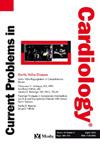Relationship between lifestyle factors and cardiovascular disease prevalence in Somaliland: A supervised machine learning approach using data from Hargeisa Group Hospital, 2024
IF 3
3区 医学
Q2 CARDIAC & CARDIOVASCULAR SYSTEMS
引用次数: 0
Abstract
Background
Cardiovascular diseases (CVDs) are leading contributors to global morbidity and mortality, with low- and middle-income countries experiencing disproportionately high burdens. In Somaliland, urbanization and lifestyle transitions have increased the prevalence of CVDs, necessitating an in-depth exploration of associated risk factors.
Objective
This study investigated the relationship between lifestyle factors and CVD prevalence among adult patients in Somaliland using data from the Hargeisa Group Hospital in 2024.
Methods
A cross-sectional design was employed, enrolling 411 adults aged ≥ 18 years. Data were collected through structured questionnaires and analyzed using traditional statistical methods and seven supervised machine learning models: Logistic Regression, Random Forest, Support Vector Machine (SVM), Probit Regression, KNN and Decision Tree. The study assessed associations between sociodemographic variables, lifestyle factors, and CVD prevalence while evaluating the predictive model performance.
Results
Age and smoking were the most significant predictors of CVD prevalence across all models, with individuals aged ≥ 60 years exhibiting the highest risk. Urban residence was associated with lower CVD prevalence, while behaviors such as khat chewing and physical inactivity increased the risk. Machine learning models, notably SVM, demonstrated robust predictive performance, achieving an accuracy of 63.4 % and an AUC of 67.1 %.
Conclusion
Lifestyle factors, particularly smoking, khat chewing, and dietary habits, are critical drivers of the CVD prevalence in Somaliland. These findings underscore the need for targeted public health interventions focusing on smoking cessation, dietary improvements, and culturally sensitive awareness campaigns. Machine learning techniques offer valuable tools for enhancing the predictive accuracy and guiding tailored health strategies.
生活方式因素与索马里兰心血管疾病患病率的关系:使用Hargeisa集团医院数据的监督机器学习方法,2024。
背景:心血管疾病(cvd)是全球发病率和死亡率的主要原因,低收入和中等收入国家的负担高得不成比例。在索马里兰,城市化和生活方式的转变增加了心血管疾病的患病率,因此有必要深入探索相关的风险因素。目的:利用2024年哈尔格萨集团医院的数据,探讨生活方式因素与索马里兰成年患者心血管疾病患病率的关系。方法:采用横断面设计,纳入411名年龄≥18岁的成年人。通过结构化问卷收集数据,并使用传统的统计方法和7种监督机器学习模型进行分析:逻辑回归、随机森林、支持向量机(SVM)、Probit回归、KNN和决策树。该研究评估了社会人口学变量、生活方式因素和心血管疾病患病率之间的关系,同时评估了预测模型的性能。结果:年龄和吸烟是所有模型中CVD患病率的最重要预测因素,年龄≥60岁的个体表现出最高的风险。城市居住与心血管疾病患病率较低有关,而咀嚼阿拉伯茶和缺乏运动等行为则增加了风险。机器学习模型,特别是支持向量机,展示了强大的预测性能,实现了63.4%的准确率和67.1%的AUC。结论:生活方式因素,特别是吸烟、咀嚼阿拉伯茶和饮食习惯,是索马里兰心血管疾病流行的关键驱动因素。这些发现强调需要有针对性的公共卫生干预措施,重点是戒烟、改善饮食和文化敏感的宣传活动。机器学习技术为提高预测准确性和指导量身定制的健康策略提供了有价值的工具。
本文章由计算机程序翻译,如有差异,请以英文原文为准。
求助全文
约1分钟内获得全文
求助全文
来源期刊

Current Problems in Cardiology
医学-心血管系统
CiteScore
4.80
自引率
2.40%
发文量
392
审稿时长
6 days
期刊介绍:
Under the editorial leadership of noted cardiologist Dr. Hector O. Ventura, Current Problems in Cardiology provides focused, comprehensive coverage of important clinical topics in cardiology. Each monthly issues, addresses a selected clinical problem or condition, including pathophysiology, invasive and noninvasive diagnosis, drug therapy, surgical management, and rehabilitation; or explores the clinical applications of a diagnostic modality or a particular category of drugs. Critical commentary from the distinguished editorial board accompanies each monograph, providing readers with additional insights. An extensive bibliography in each issue saves hours of library research.
 求助内容:
求助内容: 应助结果提醒方式:
应助结果提醒方式:


